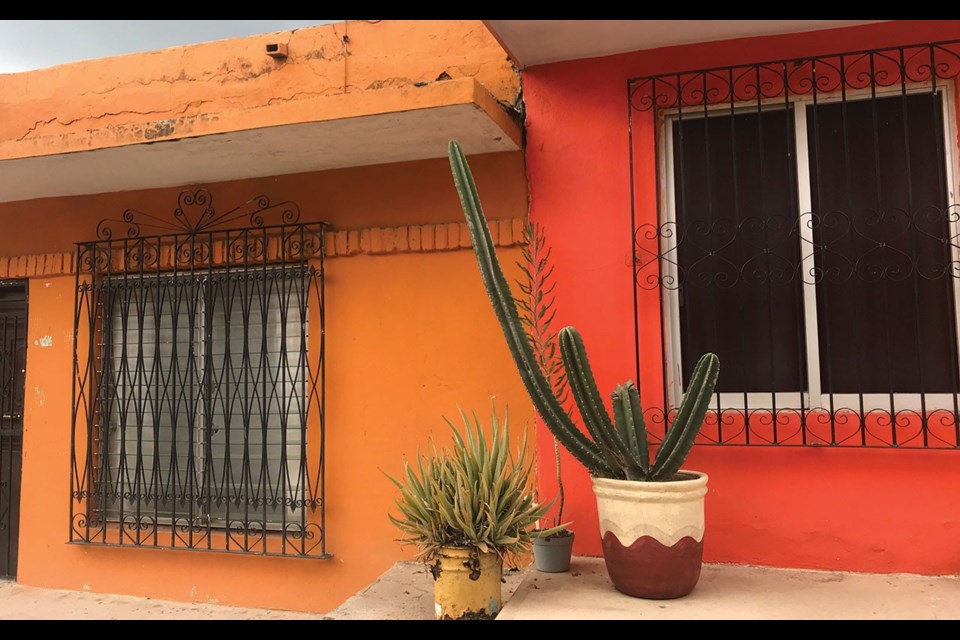The handmade ceramic vessel with the phallic spout was too big to take in my hand luggage, but I knew my husband would at least want a photo. As I tried to discreetly position the brown vessel to catch its best side, Felipe Piña, the artisan, hurried up behind me. "No, no, no!" he cried, snatching the pitcher from my hands. Had I accidentally offended him? I'd heard the phallic container played a role in bachelorette parties, but could it have some deep cultural significance that precluded photography?
Felipe grabbed a bucket of water and dumped it in the vessel. He gestured for me to relinquish my camera to a friend. Then he positioned himself beside me, and began pouring water through the phallus into the bucket. As the bucket filled, he crowed, "Mucho pee pee! Mucho pee pee!" We both cracked up, sharing an immature cross-cultural moment, a meeting of the minds with a mental age of approximately five.
Ultimately, I bought a less conversation-starting sun and moon sculpture to give to my mother. But my mucho-pee-pee photos are a priceless memory of the characters you meet when touring colonial Mexican towns.
According to tour guide Rodolfo Osuna, visiting colonial towns is the most popular day trip from Mazatlán. Pronatours, the company Osuna works for, partners with several tour companies and El Cid Resorts to expose Mazatlán beachgoers to some inland culture.
Mexico's colonial period began in 1521 when the Spanish conquered the Aztecs. Over the next 300 years, the conquerors built churches, administrative buildings, houses and town squares. Visitors soak up the mixture of old Spanish buildings and everyday modern Mexican life.
Malpica, 38 kilometres east of Mazatlán, is the first stop on Pronatours' popular three-town tour. The wonderful smell wafting through the quiet streets emanates from Panaderia Malpica. This bakery uses a mesquite-burning stove to make fresh sweet breads. I bought a sugary pineapple-filled bun, still warm from the oven, for 10 pesos.
Across the street from the bakery, Jorge Ortega makes individual tiles using a 100-year-old press. His finished products are freeform abstracts of white with coloured swirls, which he sells for three dollars each. Other sights along the main street of the small town include a church, a jewelry store where tourists haggle over fine silver, and a museum with an intriguing stone boasting 12 carved vulvas. This prompted a Google search, which opened up a whole new world of vulva stones. Turns out that since Paleolithic times, people have carved vulvas into caves, boulders and rock walls around the world, from Korea to Ireland to Mexico.
Our next stop was Concordia. This town was originally called San Sebastian, but its name changed after a 19th century French invasion—the new name means "conquered." The town holds onto its antipathy. A town hall mural includes the French torching Concordia in 1865, in addition to murals commemorating Mexico's 1821 war of independence and the revolutionary war, which ended in 1920. Osuna gave us a quick Mexican history lesson, using the murals for illustrations.
We had extra time in Concordia because our bus got a flat tire. Nobody in our group minded, as it was pleasant to wander, visiting San Sebastian Church and watching school children build Day of the Dead altars in the town square.
The flat tire had exquisite timing. A downpour started immediately after it was repaired and we'd reboarded. Our bus climbed northeast up the mountain towards Durango, water sluicing down the roads. By the time we made it to Copala, the rain had subsided and the hilly colonial town was washed clean. Copala and Concordia were both founded in the 1500s as silver mining towns. But the French didn't burn Copala, so its 500 inhabitants still live in beautiful four-century-old buildings. The cobblestone streets, brightly painted houses and statues inside the San Jose church all screamed out to be photographed. Even the chickens assembled together under a bush, as if posing for a group shot. It was just the sort of place I'd picture if I was thinking "colonial Mexican town."
While most tourists visit Mazatlán for beaches or pool-lounging at all-inclusive resorts, spending a day in the nearby colonial villages is a fun and interesting way to soak up Mexican culture as well as Mexican sunshine.




